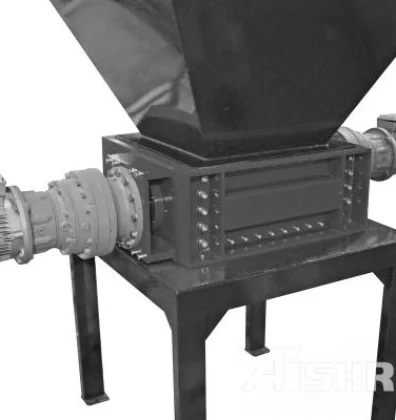Waste fabrics, textiles, clothing, leather trimmings and shoe offcuts contain certain organic and fiber-based substances with high calorific value. Therefore, these wastes can be reused as fuel raw materials by means of centralized treatment after shredding of waste cloth.
Usually, the process of handling these waste textiles includes sorting, loading, shredding, secondary shredding, uniform fabric in silo, compression molding and preparation of discharges.

Among them, the classification is to separate different types of waste textiles for subsequent processing; the loading is to feed the classified waste textiles into the production line; the shredding is to cut the waste textiles into smaller fragments so as to better carry out subsequent processing; the secondary shredding is to further reduce the size of the fragments so as to make them easier to be compressed and molded; the bin uniform cloth is to ensure that the fragments are uniformly distributed in the compression molding process so as to ensure the molding quality; compression molding is to compress the fragments into a certain shape of fuel blocks; preparation of discharge is to send the compression molded fuel blocks out of the production line.
Waste textile shredding production line is especially suitable for shredding all kinds of waste clothes, waste fabric, machine head material, all kinds of waste scraps, all kinds of waste edges and corners, waste leather, cowhide, fibers, old shoes, carpets, quilted clothes and all kinds of waste living and office supplies.
The process flow of waste textile as fuel is as follows: firstly, the waste textile is transported to the double-shaft crusher through the conveyor for coarse crushing to reduce the volume of the material for subsequent processing. Then, the shredded material enters into the magnetic separator to separate the iron substance from it and recycle it. Next, the separated waste fabric continues to enter the fine shredder to be shredded to the desired size. Finally, the finely shredded material passes through the RDF molding machine and is extruded into RDF high-density pellets, which are used as fuel for power plants to burn to generate electricity. In order to avoid polluting the environment with the dust generated during the processing, the whole line of this production line is equipped with a dust removal system, which can collect and reduce the dust from the shredding and sorting process to prevent secondary pollution.
In terms of the design of the waste textile shredder, the double shaft shear shredder adopts special anti-winding fixed knives, which can effectively deal with the problem of material winding knives and improve the shredding efficiency and equipment stability. The fixed knife is made of high-strength wear-resistant steel plate, with high strength, good toughness, not easy to break and so on. Can prevent all kinds of plastic bags, garbage bags and other packaging special winding, encountering unbreakable material equipment will self-protection, in order to quickly remove obstacles. Shredder shredded into fuel, not only to solve a large number of cloth waste problem, and save the power plant coal consumption, can be said to be two birds with one stone.

In a word, waste textile shreddng production line is an environmentally friendly and efficient way of processing, which can transform waste fabrics and textiles into useful fuels and realize the reuse of resources.


